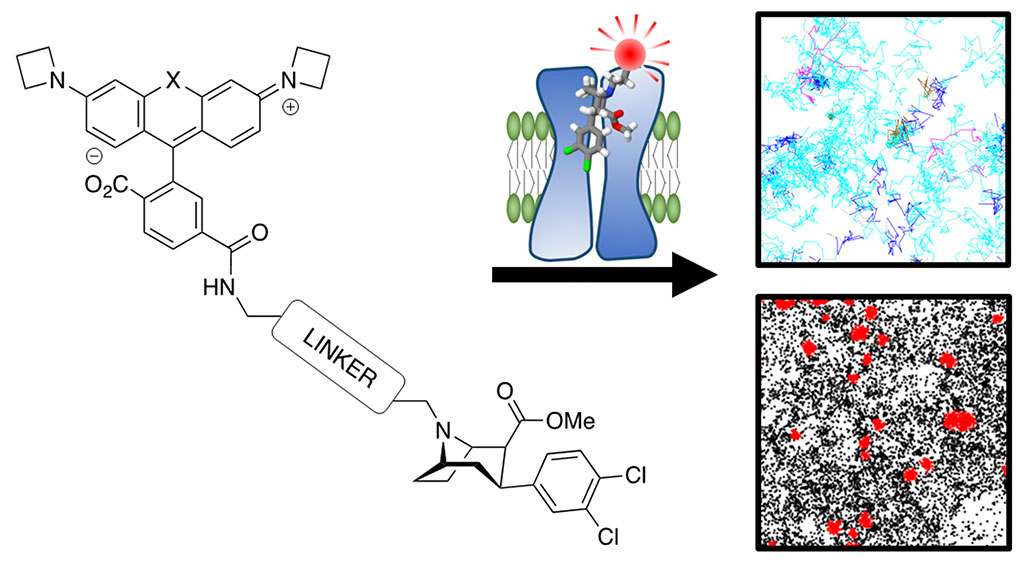 Featured Paper of the Month – February 2021
Featured Paper of the Month – February 2021
The dopamine transporter (DAT) functions to control dopaminergic neurotransmission and is a target for therapeutic agents, including ADHD medications, as well as abused substances, such as cocaine. Here, we develop new fluorescently labeled ligands as promising new tools for studying DAT localization and regulation with single-molecule resolution. Visualization with confocal or TIRF microscopy revealed selective binding of these fluorescent ligands to DAT. Single particle tracking experiments were performed that enabled quantification and categorization of the dynamic behavior of DAT into four distinct motion classes (immobile, confined, Brownian, and directed). Moreover, we show that these ligands can be used in direct stochastic optical reconstruction microscopy (dSTORM) experiments permitting further analyses of DAT distribution on the nanoscale.
Publication Information
Novel Fluorescent Ligands Enable Single-Molecule Localization Microscopy of the Dopamine Transporter Journal Article
In: ACS Chemical Neuroscience, vol. 11, no. 20, pp. 3288–3300, 2020.
